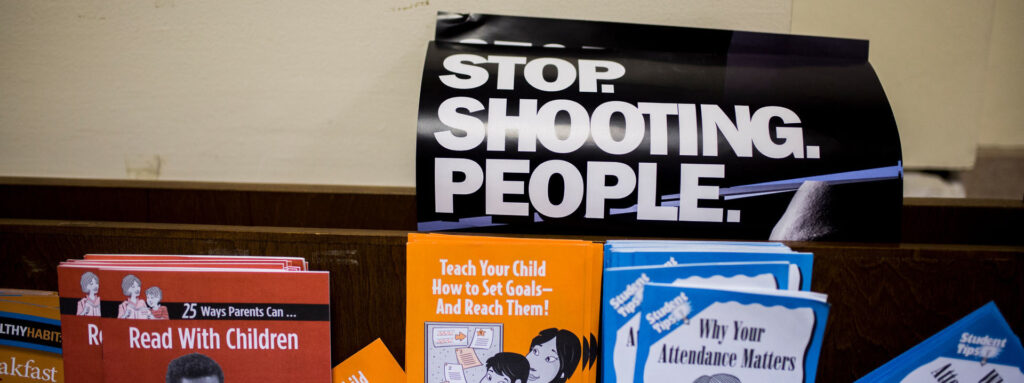We don’t yet have all the details about the tragedy that unfolded yesterday in Parkland, Florida. We do know that a gunman walked into Marjory Stoneman Douglas High School and opened fire with a semiautomatic rifle, killing at least 17 people. We know that students are among the dead—which means we know there are now more families who have lived the unspeakable nightmare of sending their kids off to school, never to return. And we know that teachers are among the dead, people who committed their lives to helping our kids and did so heroically until the end.
We also know that this carnage in our schools has become horrifically routine. This is the 18th school shooting in only 45 days this year, an average of one shooting every 60 hours or so. It’s the 290th school shooting since a gunman murdered 20 first graders at Sandy Hook Elementary in Newtown, Connecticut, a little more than five years ago.
We know that the scourge of mass shootings extends to many other spaces that are supposed to be safe, for our kids and for everyone else. In that same five-year period, there have been more than 1,600 mass shootings that have killed more than 1,800 people—at malls, movie theaters, concerts, and on and on. And of course, far more young people are affected by gun violence than just those we count in mass shootings, since children are also killed by guns in their neighborhoods and even in their homes. Still more are traumatized by the effects of gun violence in their communities.
We also know that America is the only country where gun violence—in schools or anywhere else—happens close to this frequently.
Faced with this data, we need to start calling the endless stream of mass shootings in America what it is: a public health epidemic that poses a particular threat to our children. It’s a textbook example of a problem we rely on the federal government to address—one that’s too large in scale and scope for local or state governments to solve in a piecemeal fashion. And there are many promising examples to study from around the world—notably Australia and the UK—of policy changes that have led to steep declines in mass shootings and gun deaths more broadly.
I grew up in a big city where few people owned firearms, and guns were simply things to be feared. Personally, I’m a strong proponent of gun control measures, like universal background checks and assault weapon bans, and would support even stricter measures. But I recognize that other Americans grew up in places with strong family traditions of hunting and gun ownership and are opposed to federal gun control for principled reasons. Opposing an assault weapons ban is a legitimate position. Opposing any change in federal policy is not.
Yet since the massacre at Sandy Hook, the federal government has done absolutely nothing to prevent future mass shootings. Doing nothing, when other countries have managed to significantly reduce gun violence, gives more credence every day to the searing observation of former Education Secretary Arne Duncan: We don’t love our kids as much as they do in other countries.
It’s time for our political leaders to show that they love our kids enough to make sure none of them ever experience the horrors those students in Parkland endured yesterday.
For educators who are looking for support discussing yesterday’s tragedy and other gun violence with their students, Teaching Tolerance offers a toolkit of resources. The Student Pledge Against Gun Violence also provides a starting point for conversations and an action step teachers and students can take together.





